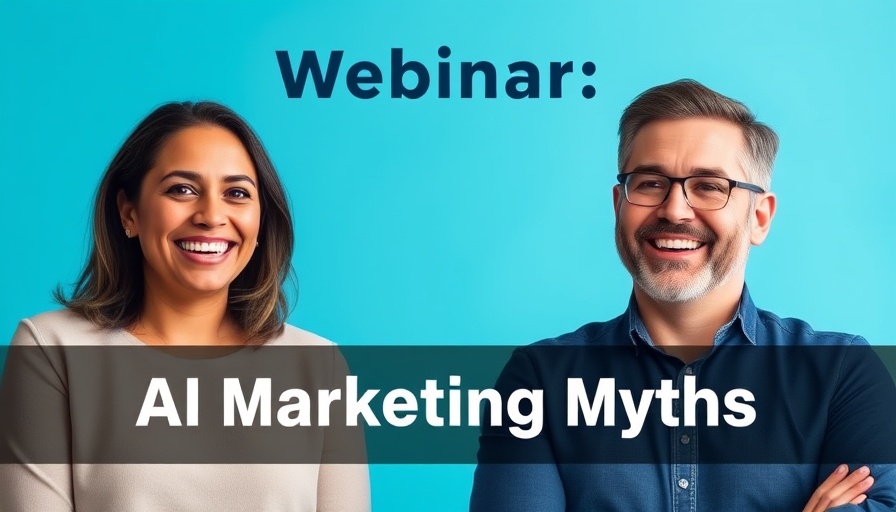
Unpacking AI Marketing Myths: The Hidden Costs
In today's fast-evolving landscape of digital marketing, artificial intelligence (AI) stands out as a game-changer. However, many marketers still fall prey to common misconceptions that hinder their ability to leverage AI effectively. A revealing webinar by experts from Search Engine Journal and CallRail sheds light on six myths that are not only slowing marketing teams down but also draining their budgets.
Myth 1: AI Can Run Marketing on Autopilot
This myth is critical because it encourages brands to over-rely on automated outputs without human oversight. Brands often believe they can simply deploy AI tools and forget about them—this approach rarely results in desired outcomes. Experts emphasize the importance of strategic oversight and continuous human involvement to guide AI in producing credible, high-quality results.
Myth 2: Generic AI Outputs Are Good Enough
The notion that “good enough” AI prompts are sufficient is another fallacy that businesses must overcome. Poorly crafted prompts result in content that fails to engage audiences. This calls for a shift in perspective—marketers should focus on how well they prompt AI, which can enhance the relevance and personalization of content. Better prompting leads to better targeted marketing and less wasted ad spend.
The Costs of Fluffy AI Content
As more businesses race to implement AI, many wind up producing 'fluff'—content that fails to resonate with audiences. Burnout from low-quality content is a real issue that can reflect poorly on brands. To combat this, marketers need to be aware of their audience’s preferences and adapt their AI-generated content accordingly.
Leveraging Data for Personalized Marketing
One powerful way to enhance AI's effectiveness is by leveraging real-time data. This approach allows marketers to create highly personalized marketing content that truly resonates with target audiences. By harnessing their brand voice and existing data, marketers can help AI produce results that enrich their marketing funnels rather than detract from them.
Transforming AI from Threat to Partner
Instead of viewing AI as a threat to their jobs, marketers should see it as a valuable partner. The right training and understanding of AI capabilities can transform how marketing teams operate. This could foster creativity, allowing teams to focus more on strategy while AI handles repetitive tasks or data analysis.
Actionable Steps for Effective AI Utilization
Adopting AI should come with a structured plan. Marketers can start by:
- Setting clear objectives for AI tool utilization.
- Investing in training for better prompt structures.
- Regularly analyzing and adjusting strategies based on data insights.
These actionable steps can push marketing efforts forward while utilizing technology smartly and efficiently.
Concluding Thoughts
Understanding these myths can significantly impact how brands use AI in their marketing strategies. Emphasizing collaboration between technology and human insight will lead to improved output and avoidance of lost budgets. As the marketing landscape shifts, those who adapt by learning to harness AI's potential will undoubtedly find success.
 Add Row
Add Row  Add
Add 




Write A Comment